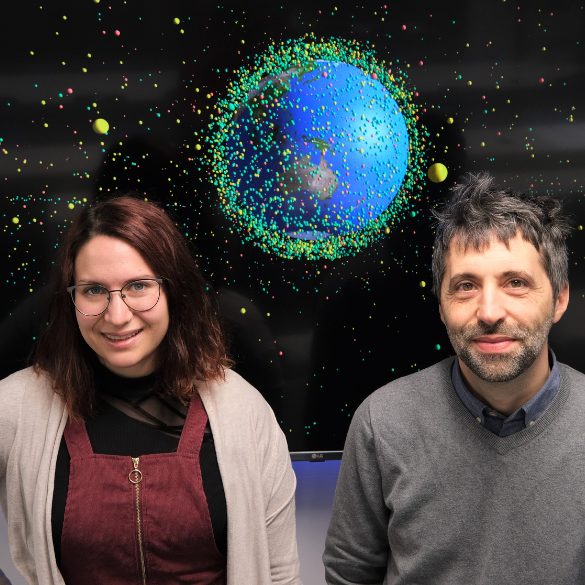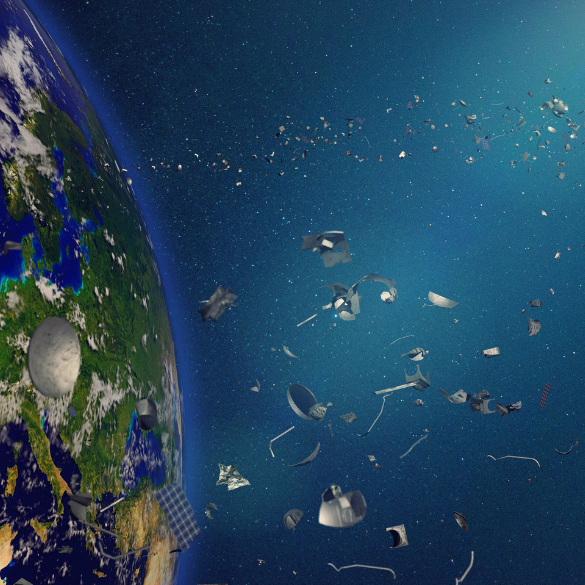Space. The very word conjures vastness and emptiness. In fact, space is becoming more crowded all the time, especially near Earth. With the recent proliferation of small satellites, there’s an increasing need to control space traffic. Fortunately, Roberto Armellin and Laura Pirovano of the University of Auckland’s Space Institute – Te Pūnaha Ātea – are working on solutions.
Armellin is a professor and Pirovano is a postdoctoral research fellow, both in the Department of Mechanical Engineering. They are experts in astrodynamics, the study of the motion of man-made objects in space.
Armellin first got into the field to understand the motion of asteroids and whether they might be dangerous for the Earth. Work he did with the European Space Agency helped determine that an asteroid due to approach Earth in 2029 wouldn’t pose a danger – and neither would its return in 2036. With no immediate need to save humanity from the fate of the dinosaurs, Armellin turned to a much more credible danger: space debris.

